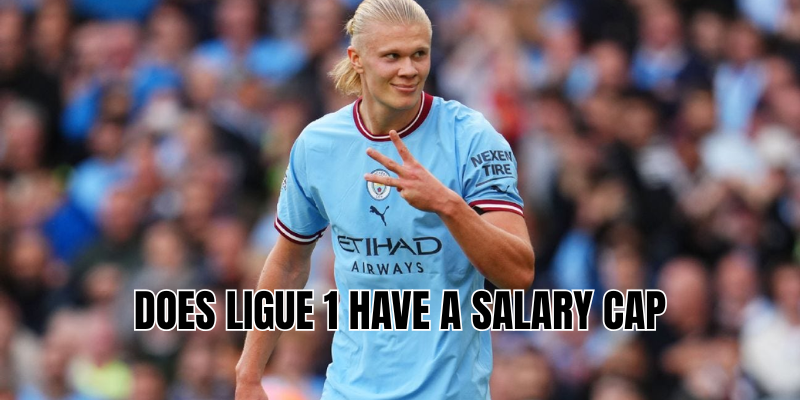From the outset: Ligue 1 does not currently have a hard salary cap in the way that some American sports leagues do. However, recent and evolving financial rules impose limits on how much clubs can spend on wages relative to their income. In short, there isn’t a fixed maximum salary, but there are constraints on aggregate wage bills.
Below, ZizaGoal will dive into the financial controls in Ligue 1, what “salary cap–like” rules exist, how they work, and what that means for clubs, players, and fans.
What rules regulate wages in Ligue 1

While there is no outright cap on individual player salaries, Ligue 1 clubs are regulated heavily by financial oversight bodies and rules aimed at preventing overspending. Key elements:
- DNCG (Direction Nationale du Contrôle de Gestion): French football’s financial watchdog. It examines club finances, including debt, revenues, and especially wage commitments. Clubs must have their accounts approved by the DNCG to play in Ligue 1. Violations can lead to sanctions, point deductions, relegation, or denial of licenses.
- Wage bill to revenue ratio: One of the main regulatory levers is that clubs are encouraged (or required under certain financial guidelines) to keep their wage bills below a fixed percentage of their revenues. Specifically, no Ligue 1 club is supposed to have a wage bill greater than 70% of its income starting.
- Other financial hygiene rules: Clubs also must manage debt levels, ensure share capital is enough, and avoid liabilities that exceed what the club can sustainably support. The 70% wage ratio is only one of several constraints. fa.com)
Key developments: When and how the rules are being applied

To understand the practical side, here’s the timeline and how these rules are or will be enforced:
- In 2022, reports (notably from L’Équipe and French media via other outlets) confirmed that the DNCG intends to enforce the 70% limit on wage bills vs club income, to reduce imbalance to adjust their wage bills, to reduce overspending and prevent financial collapse. Some clubs already spend close to or above the threshold, so it forces tough decisions: offloading players, reducing contracts, or finding new revenue sources.
- UEFA’s own “cost control / squad cost” rules intersect with this. Under UEFA regulations, clubs in European competitions are limited in how much they can spend on wages, transfers, and agent fees relative to revenues. Over time the permitted percentage has been reducing, aiming toward around 70% of revenues.
What the 70% rule means in practice

This limit — wage bill ≤ 70% of club income — works like a soft cap in some respects. It doesn’t limit individual salaries, but it constrains aggregate spending. Here’s what it implies:
- Clubs with historically very high wage bills (like Paris Saint-Germain) must reduce salary costs or increase revenues. PSG has been warned to lower its wage bill.
- Mid-size clubs must be more cautious in recruitment and in contract renewals. Big contracts or expensive signings must be matched by solid revenue growth or sacrifices elsewhere.
- Smaller clubs feel the pressure more keenly: they often lack huge commercial or broadcasting incomes, so 70% of their income is a lower absolute figure. This means they have less margin for error.
- The ratio encourages clubs to diversify income (TV rights, sponsorships, matchday, merchandise) so they can afford better players while abiding by financial rules.
Salary data: how are clubs doing relative to these limits
To get a sense of how wage bills compare currently:
- PSG’s 2025-26 wage bill is estimated around €158 million and is way above many rivals.
- The gap is huge: a few clubs have wage bills over €100 million; many others are far below.
- Real cases: PSG’s wage bill in recent years has been close to or exceeding 90% of some measure of income (turnover) before adjustments — well over the proposed 70% limit. This part of what triggered regulatory attention.
- On the average salary side, top players still earn multi-million euros annually, but most Ligue 1 players are well below that. The variation is large.
Limitations & challenges
Even with the financial rules, there are several tricky points:
- Enforcement: Just having a rule doesn’t mean all clubs stay under it. Oversight is hard, especially when accounting, bonuses, payments outside base salary, and non-wage costs come into play.
- Variable income: Income streams can fluctuate. If income drops but contracts remain, a club may breach the ratio unintentionally.
- Bonuses, agents, amortization: Some costs (transfer amortization, agents’ commissions, bonuses) may not be fully counted in certain formulas, so clubs may find workarounds. UEFA rules try to include many of these, but variations remain.
- Competitive disadvantage: For clubs with lower commercial pull or smaller markets, strict wage constraints can limit competitiveness in recruiting top talent, which can perpetuate inequality.
Bottom line: Yes, there is a “cap-like” limit but not a fixed salary cap
So, to restate: Ligue 1 does not have a formal salary cap in the sense of “no player can be paid more than X” or “club wages can never exceed X euros.” What does exist is:
- A financial oversight framework (DNCG) that requires clubs to operate sustainably.
- A wage-bill to revenue ratio (≈70%) that clubs are expected to respect.
- Rules and penalties for not complying with financial regulations.
This makes it more like a soft cap / financial fair play ceiling rather than a rigid salary cap.
Why the question matters: impact on Ligue 1
- Competitive balance: Clubs with huge budgets (e.g. PSG) dominate both sporting and financial aspects unless regulations force them to rein in wages, which may help competitive balance.
- Player contracts and transfers: Players whose wages or transfer fees are too big become riskier; clubs may offer lower wages or seek performance-related terms or bonuses.
- Club health: With declining media rights or revenue shocks (like missed payments), clubs that spend near maximum permissible levels are fragile. Overspending can lead to large deficits or administrative sanctions.
- Fans: Ultimately, the quality of the league, stability of clubs, and ability to keep star players depend on these financial rules. Fans may see fewer crazy transfer splashes if clubs must obey these wage limits — but arguably a more stable league.
Conclusion
In summary: Ligue 1 does not have a strict salary cap in the sense used in some American sports, but it does have enforceable financial regulations that cap how much clubs can spend on wages relative to their income — currently around 70% of revenue under the rules set by the DNCG and consistent with UEFA cost control requirements. The main keyword here is that Ligue 1 has salary limits, not fixed caps.
If you want, ZizaGoal can pull up specific club examples (PSG, Lyon, Marseille) showing how much over or under the 70% limit they are currently, or compare Ligue 1’s rules to Premier League, La Liga, or Bundesliga. Do you want me to do that?







